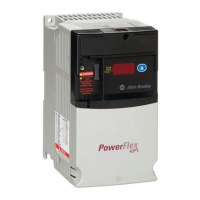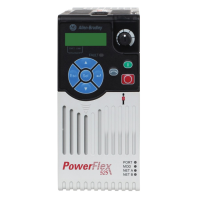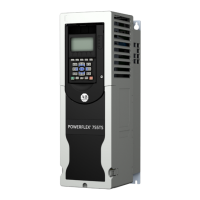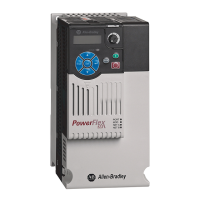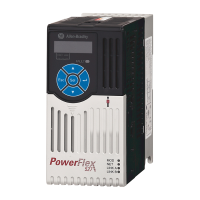Electrical Installation 5-3
Rockwell Automation Publication 22C-IN002E-EN-P - November 2010
Installing Output Power
Wiring
To connect the AC output power wiring from the drive to the motor:
❏ Step 1. Wire the three-phase AC output power motor leads by routing
them according to the drive option type. Note that you must punch
openings in the option cabinet of the desired conduit size,
following NEC and all applicable local codes and standards.
Do not route more than three sets of motor leads through a single
conduit. This will minimize cross-talk that could reduce the
effectiveness of noise reduction methods. If more than three drive/
motor connections per conduit are required, shielded cable must be
used. If possible, each conduit should contain only one set of
motor leads.
❏ Step 2. Connect the three-phase AC output power motor leads to terminals
U/T1, V/T2, W/T3 on the power terminal block located in the
options cabinet.
❏ Step 3. Tighten the three-phase AC output power terminals to the proper
torque according to drive type as shown in Table 5.C
.
The following sections describe incoming line components and how to
install them. Note that fuses and an input disconnect are also available as
factory-installed options.
Installing an Optional
Transformer or Reactor
Input isolation transformers might be needed to help eliminate:
• Damaging AC line voltage transients from reaching the drive.
• Line noise from the drive back to the incoming power source.
• Damaging currents that could develop if a point inside the drive becomes
grounded.
ATTENTION: Unused wires in conduit must be grounded at
both ends to avoid a possible shock hazard caused by induced
voltages. Also, if a drive sharing a conduit is being serviced or
installed, all drives using this conduit should be disabled to
eliminate the possible shock hazard from cross-coupled motor
leads. Failure to observe these precautions could result in bodily
injury.
ATTENTION: Do not route signal and control wiring with
power wiring in the same conduit. This can cause interference
with drive operation. Failure to observe these precautions could
result in damage to, or destruction of, the equipment.
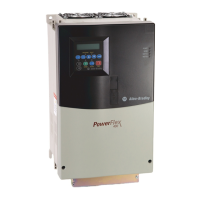
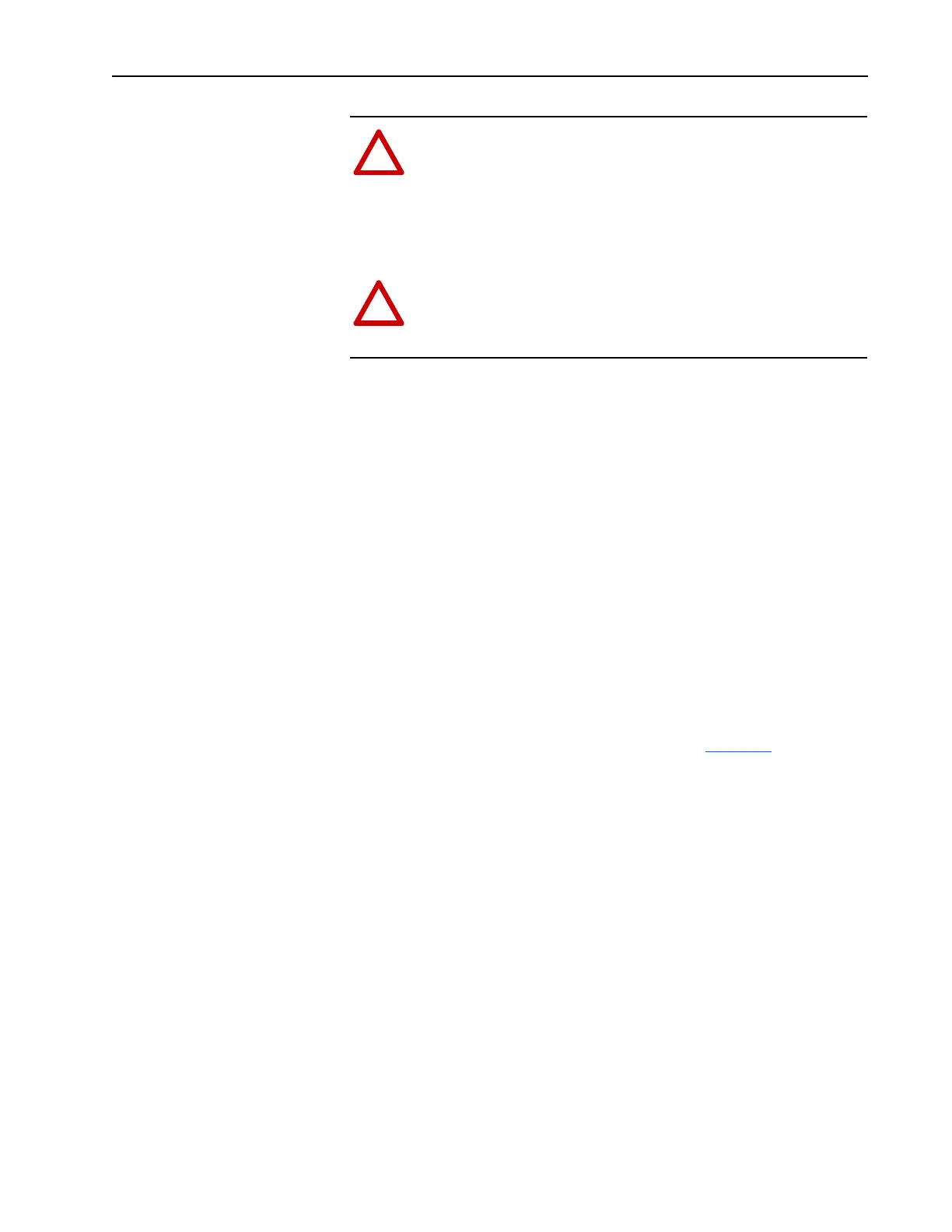